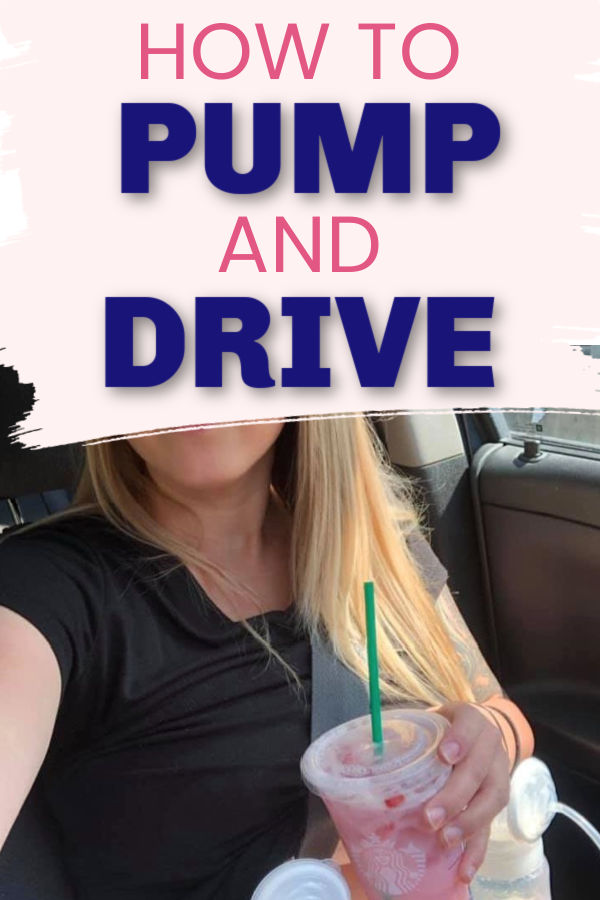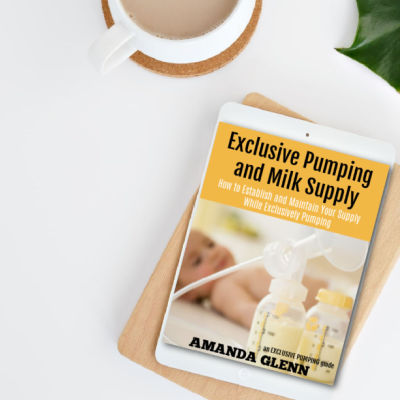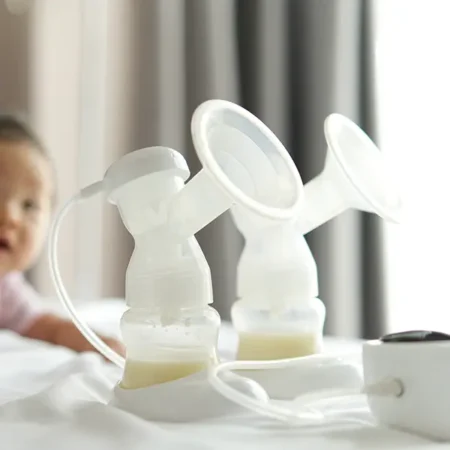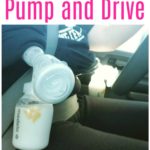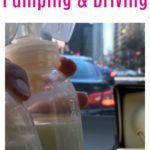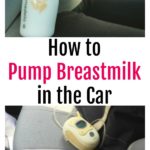Before pumping and driving, you should evaluate your ability to drive and pump without getting distracted, your range of motion when you’re pumping, and any local laws and statutes. You should also consider risks related to your airbag deploying if you should have an accident. Safety is the most important thing. Do not pump and drive if you cannot do it safely and legally.
Pumping and driving is one way to maximize your limited time as an exclusive pumper.
Having the ability to pump and drive comes in handy in a lot of situations – it can save you time when you commute to work, and it can be a good way to get a pumping session in when running an errand with your baby or on your way to an event. Here’s how to do it, and some safety considerations.

This post may contain affiliate links, which means if you click a link and purchase something, I may make a small commission at no additional cost to you. I only recommend products I love! More information here.
If you’ve decided to give pumping and driving a try, the first step is to put your pump bag together.
What You Will Need for Pumping and Driving
Below is a list of what you’ll need to bring with you to pump and drive.
- Your pump (this must be an electric pump rather than a manual pump for safety reasons)
- A hands-free pumping bra (this is also essential for safety if you don’t have a wearable pump),
- A nursing cover if you want to cover your chest (here is the one I used, you can also use a big t-shirt or baby blanket to cover yourself),
- A set of pump parts,
- Two bottles (with caps), and
- A gallon-sized plastic zip-top bag or wet bag (like this one).
- If your pump doesn’t have a battery, you may also need a battery pack or car adapter (like this one).
As you pack your bag, assemble the pump parts and screw in the bottles. Then put the pump parts, attached bottles, breast shields, and caps for the bottles in the zip-top bag in your pump bag.
Putting the pump parts together before you pack it both helps you make sure not to forget a part, and makes getting set up in the car easier.
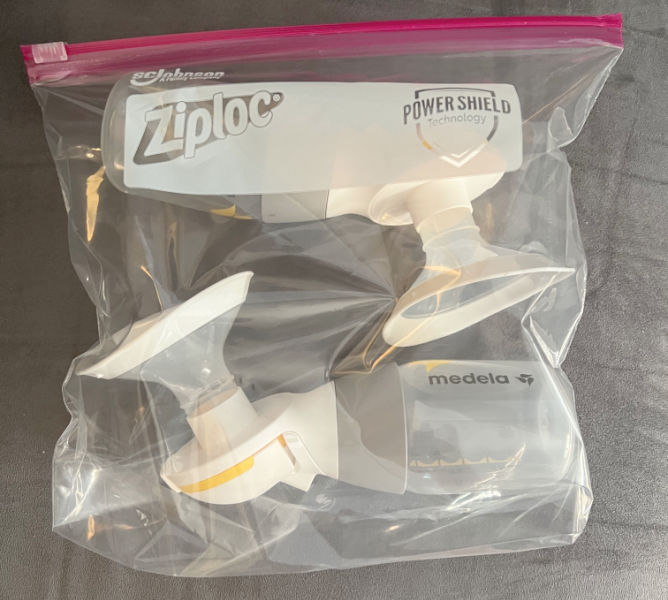
Pumping and Driving Steps
Here is how to pump and drive in six simple steps.
1. Get your pump set up
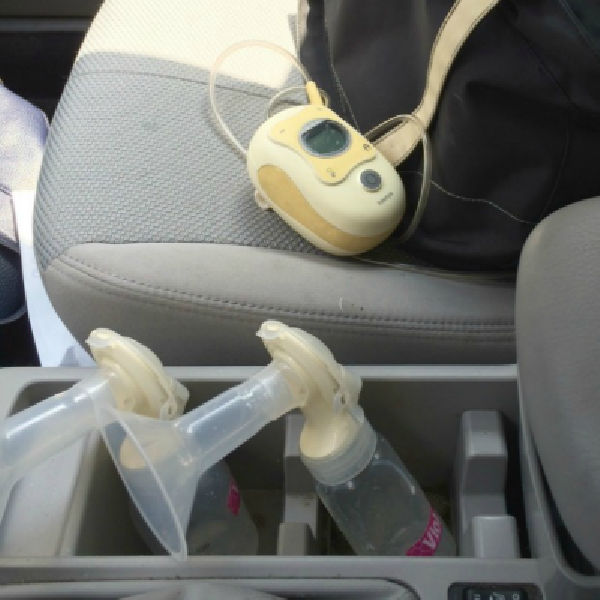
Put the pump on the seat next to you, plug it in (if applicable) and, if you have cup holders, make sure they are empty.
This is for two reasons – one, so that you can put the pumped-in bottles in them when you’re done, and two, so you don’t knock over any drink that happens to be in there with your pump tubing. I learned this the hard way with an unfortunately placed bottle of Diet Coke.
2. Get yourself set up
If you’re using a nursing cover, put it on.
If you need to, put your hands-free pumping bra on under your shirt, and get yourself all set up to pump.
3. Put your seat belt on
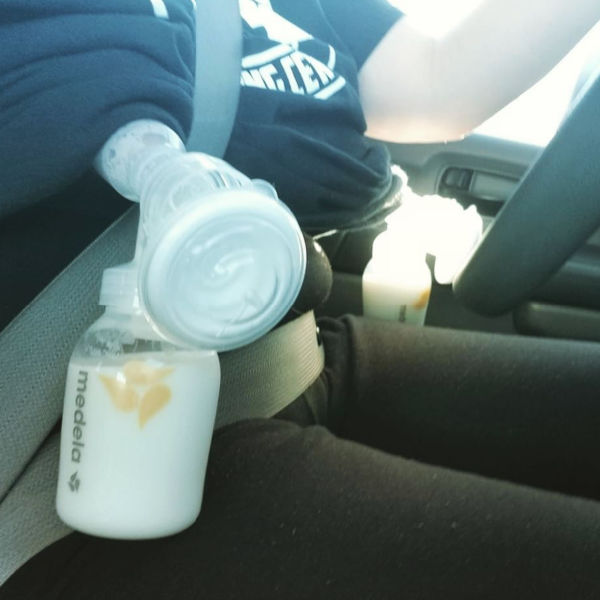
Put your seat beat on, with the lap belt under the bottles and the front belt across your chest between the bottles.
4. Start your pump
Start the pump, make sure it is set to the correct settings and that you’re comfortable.
5. Start driving
Drive. IGNORE YOUR PUMP. Do not check the bottles, do not change the settings, pretend you are not pumping.
Try not to get pulled over. If you are feeling brave, go through a drive-thru and get a coffee.
6. Stop driving, then turn off the pump and remove the bottles
When you have arrived at your destination or are done pumping and can pull over for a minute, turn off the pump. Be careful – this should not be done while you are driving the car.
Disassemble your pump parts. Put the bottles in the cup holders as you detach them from the breast shields. Then put the caps on the bottles, and your used pump parts into the plastic zip-top bag.
That’s it, you’re done!
Need help with exclusive pumping? Use EPUMP30 for 30% off
Pumping and Driving Safety
You should not attempt pumping and driving if:
- You are distracted by the sensation of pumping.
- You have decreased range of motion when wearing your pump.
- You can’t resist the urge to check the bottles or change settings without first pulling over.
- You don’t have a hands-free pumping set up.
- It’s illegal in your area.
Even if none of this is true for you, keep in mind that there are still risks to pumping and driving that you need to weigh. For example, if you’re hit in a head-on collision, and your airbag deploys, there is a risk to having your pump parts sitting on your chest.
Have you tried pumping and driving? How did it go?
